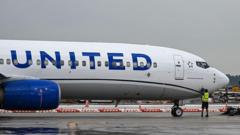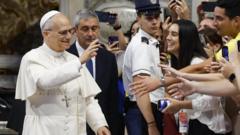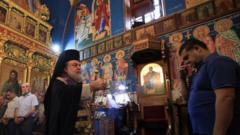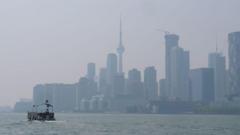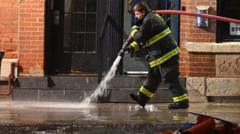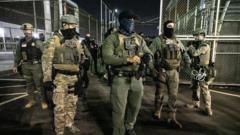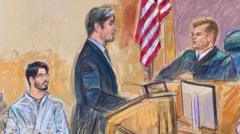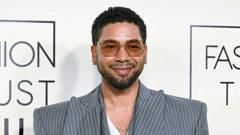Robert Prevost's election as Pope Leo XIV marks a significant departure from centuries of papal tradition, making him the first American pope. As he steps into this pivotal role, questions arise about his direction for the Church and how closely he will adhere to Pope Francis' inclusive policies.
Historic Election: Robert Prevost Becomes First American Pope Leo XIV

Historic Election: Robert Prevost Becomes First American Pope Leo XIV
In a surprising break from tradition, Robert Prevost has been elected Pope Leo XIV, the first American to hold the papal office, promising to address key issues facing the Catholic Church.
Article text:
In a historic moment for the Catholic Church, Robert Prevost has been elected as the new pope, taking the name Leo XIV. The announcement came during a special gathering at St. Peter’s Square, where the new pope greeted an enthusiastic crowd with a message of “Peace be with you.”
This groundbreaking choice represents a significant shift from longstanding conventions, as it is the first time an American has assumed the papacy. According to Jason Horowitz, our correspondent in Rome, “In a world that seems upside down, old taboos are also breaking in the Vatican.”
The conclave of cardinals convened for just over 24 hours before reaching their decision, reflecting the urgency of the times. As Pope Leo XIV, Prevost will face crucial decisions regarding the future path of the Church, particularly on whether to uphold the inclusive and progressive agenda championed by Pope Francis or to establish a different direction.
Born in Chicago and aged 69, Leo XIV has deep roots outside the U.S., having devoted two decades to missionary work, serving as a parish priest, educator, and bishop in Peru. His elevation to cardinal by Pope Francis occurred less than two years ago, highlighting his rapid ascent within the Church.
A member of the Order of St. Augustine, Prevost’s commitment to addressing the needs of the poor and marginalized mirrors that of his predecessor. However, his stance on LGBT issues remains uncertain, raising questions on whether he will continue Francis’ welcoming approach toward gay, lesbian, bisexual, and transgender Catholics.
Looking ahead, Pope Leo XIV will conduct Mass at the Sistine Chapel, engage in prayers at St. Peter’s Basilica, and hold a press conference with journalists in the coming days. The papacy's evolving landscape under his leadership promises to be a focal point for countless discussions on faith and inclusivity.
In a historic moment for the Catholic Church, Robert Prevost has been elected as the new pope, taking the name Leo XIV. The announcement came during a special gathering at St. Peter’s Square, where the new pope greeted an enthusiastic crowd with a message of “Peace be with you.”
This groundbreaking choice represents a significant shift from longstanding conventions, as it is the first time an American has assumed the papacy. According to Jason Horowitz, our correspondent in Rome, “In a world that seems upside down, old taboos are also breaking in the Vatican.”
The conclave of cardinals convened for just over 24 hours before reaching their decision, reflecting the urgency of the times. As Pope Leo XIV, Prevost will face crucial decisions regarding the future path of the Church, particularly on whether to uphold the inclusive and progressive agenda championed by Pope Francis or to establish a different direction.
Born in Chicago and aged 69, Leo XIV has deep roots outside the U.S., having devoted two decades to missionary work, serving as a parish priest, educator, and bishop in Peru. His elevation to cardinal by Pope Francis occurred less than two years ago, highlighting his rapid ascent within the Church.
A member of the Order of St. Augustine, Prevost’s commitment to addressing the needs of the poor and marginalized mirrors that of his predecessor. However, his stance on LGBT issues remains uncertain, raising questions on whether he will continue Francis’ welcoming approach toward gay, lesbian, bisexual, and transgender Catholics.
Looking ahead, Pope Leo XIV will conduct Mass at the Sistine Chapel, engage in prayers at St. Peter’s Basilica, and hold a press conference with journalists in the coming days. The papacy's evolving landscape under his leadership promises to be a focal point for countless discussions on faith and inclusivity.

